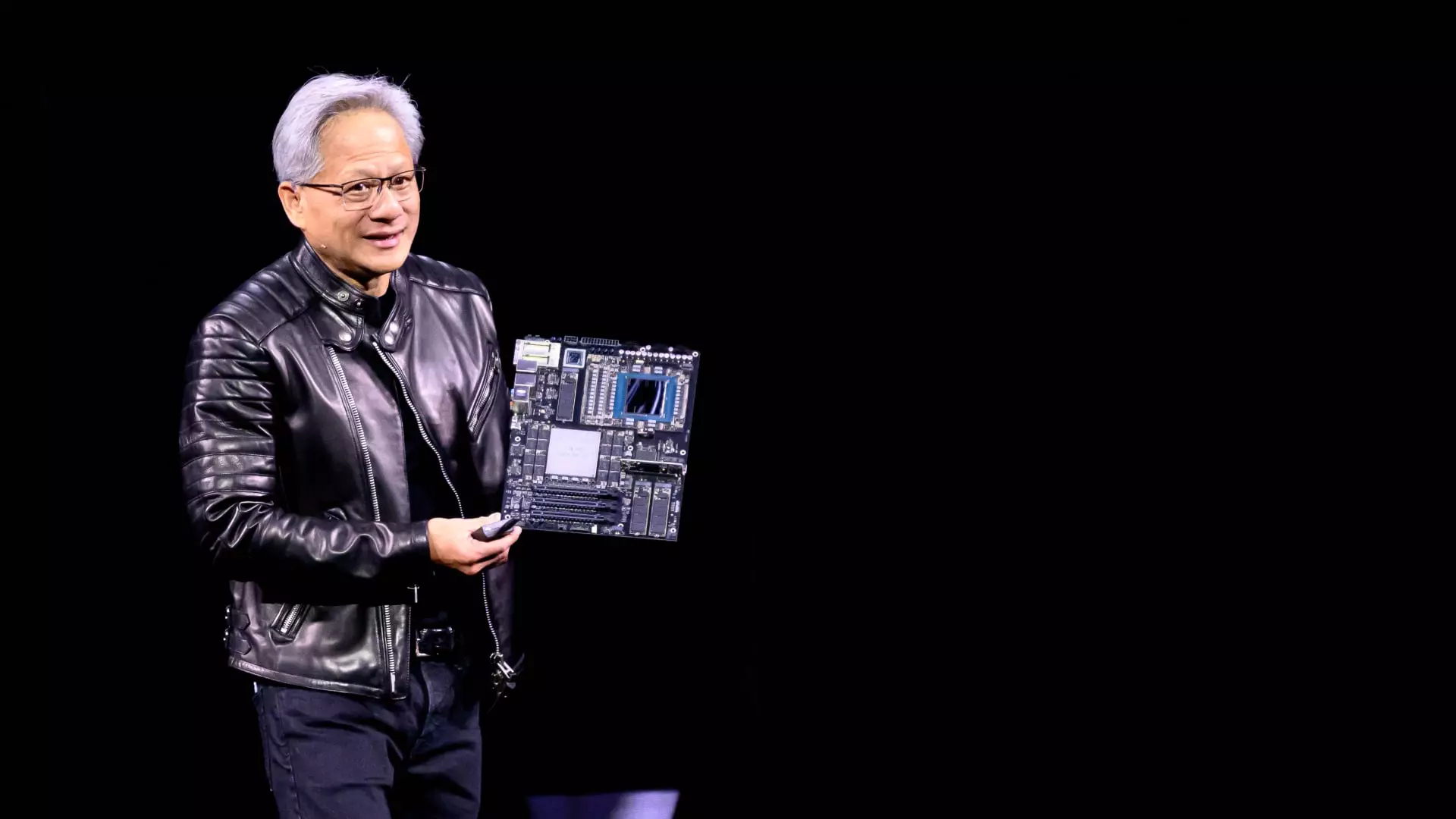Nvidia’s GTC conference recently showcased an electrifying keynote delivered by CEO Jensen Huang, emphasizing the pivotal role of high-performance chips in the future of artificial intelligence (AI). Dispersing a sense of urgency and excitement, Huang unfurled his company’s vision—one that insists on acquiring the fastest available GPUs. It’s a clarion call for cloud providers and enterprises steeped in AI development to embrace this technology not just as a convenient advantage but as a fundamental necessity for staying competitive in an industry poised for meteoric growth.
With Huang illuminating the landscape of GPU performance, what becomes apparent is not just the allure of speed but its symmetrical relationship with cost-effectiveness. While investors may voice concern over the escalating expenditure associated with top-tier AI chips, Huang pivoted the narrative around faster technology as the ultimate cost-reduction mechanism. His assertion that enhanced speed will alleviate financial anxiety among clients is indicative of a bold perspective that casts traditional cost-return debates into an unscripted limelight.
The Impending AI Boom
One of the most compelling aspects of Huang’s keynote is his forward-thinking approach to the projected surge in AI infrastructure investment. Citing the expected allocation of several hundred billion dollars in capital, he tapped into the pulse of a transformative trend. The growth trajectory signals that computational demands will intensify exponentially within the next decade, a reality underscored by Huang’s meteorically ambitious projections.
In a radical demonstration of Nvidia’s cutting-edge developments, Huang stressed the empirical benefits of the Blackwell Ultra systems, which promise to generate 50 times more revenue for data centers compared to their predecessors. This revelation has stirred optimism not only among stakeholders but also among clients that seek to harness the potential of AI across diverse sectors. As the appetite for AI continues to rise, such innovations are poised to liaison with enterprises ready to realize their strategies through superior technology.
Crunching the Numbers
Delving deeper into the financial aspects, Huang shared eye-opening analytics around cost efficiency and computational output. By breaking down the costs associated with AI outputs, he demonstrated how the racetrack of innovation is paved with empirical data that speaks to ROI concerns. It’s refreshing to see a leader unafraid to tackle the economics of technology hand-in-hand with its implementation; Huang’s candid envelope math serves as a blueprint for cloud developers grappling with the complexities of capital investment.
Investors are naturally concerned about the pace of spending among the major cloud providers—Microsoft, Google, Amazon, and Oracle. Yet, Huang aimed to alleviate these fears, revealing that the uptake of Blackwell GPUs has surged from the prior generation (Hopper). With substantial commitments to purchasing 3.6 million units of the Blackwell architecture, it becomes evident that major players are not only interested but are actively scaling their AI efforts with Nvidia’s state-of-the-art technology.
Fighting Off the Competition
While Huang’s insights are laden with optimism, they also boldly confront the competitive landscape. The CEO openly dismissed the growing trend of custom chips designed by major cloud providers, arguing that these specialized chips often lack the versatility required for contemporary AI applications. His skepticism toward the viability of custom AI chips is rooted in a broader industry perspective—many initiatives languish, illustrating that the potential of one’s technology must not just exist on paper but also outperform established standards.
This frank assessment of the competitive landscape is not merely dissuasive; it empowers clients to consider the weighty stature of Nvidia in a market that demands agility and unprecedented performance. As Huang astutely highlighted, the question facing organizations contemplating investment in AI revolves around the caliber of the technology underpinning their ambitions.
A Vision for Tomorrow
Ultimately, Huang’s keynote was a well-crafted interplay of data, vision, and urgency that underscores the monumental journey ahead for AI and computational technology. The focus has irrevocably shifted towards not just adaptation but aggressive anticipation of technological advancement. As enterprises prepare their infrastructures, embracing Nvidia’s blueprints for the future is less a question of choice and more an imperative for survival in an increasingly competitive environment.

